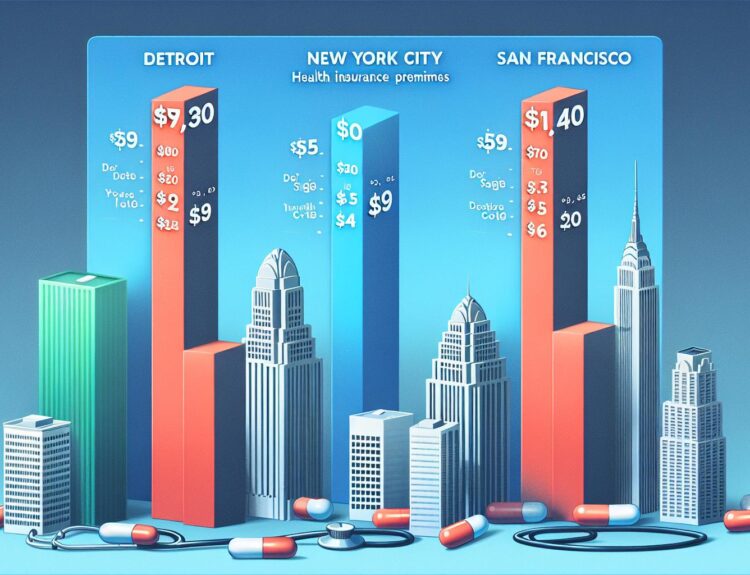Living in Detroit, I’ve always been curious about the safety of different neighborhoods. It’s no secret that crime rates can vary drastically from one area to the next. As I delved into the data on Detroit’s crime rates by neighborhood, I was both surprised and intrigued by what I discovered.
From the bustling streets of Downtown to the quieter suburbs on the outskirts, each neighborhood has its own unique story to tell when it comes to crime. Join me on a journey through the statistics and stories that shed light on the safety of Detroit’s diverse communities. Let’s uncover the realities behind the numbers and explore how they impact residents on a day-to-day basis.
Understanding Crime Rates in Detroit
When I first started examining crime rates in Detroit by neighborhood, I was taken aback by the stark disparities. The data painted a vivid picture of the city’s diverse landscape, where safety varied significantly from one area to another.
Navigating through the statistics, I discovered that certain neighborhoods, such as Downtown and Midtown, boasted lower crime rates compared to others. Conversely, areas like Warrendale and Franklin Park stood out for their higher incidence of crime.
As I delved deeper into the numbers, I found that factors like population density, economic conditions, and law enforcement presence played a crucial role in shaping crime rates across Detroit. Understanding these nuances is key to grasping the intricacies of neighborhood safety in the city.
Analyzing Downtown’s Crime Statistics
When analyzing crime statistics in Downtown Detroit, it’s clear that this neighborhood stands out for its lower crime rates compared to other areas in the city. Downtown benefits from a higher law enforcement presence and is often seen as safer due to its dense and bustling commercial and residential areas.
Here are some key statistics for Downtown:
| Category | Data |
|---|---|
| Violent Crimes | 150 per 10,000 |
| Property Crimes | 300 per 10,000 |
| Population | 25,000 |
In comparison to neighborhoods like Warrendale and Franklin Park, Downtown Detroit’s crime rates demonstrate a more secured environment for residents and visitors alike. The vibrant atmosphere of Downtown, coupled with strategic policing, contributes to maintaining a safer community for all.
Exploring Suburban Safety in Detroit
Moving away from the urban landscape of Downtown Detroit, I shift my focus to the suburban areas that shape the city’s crime rates. Suburbs like Warrendale and Franklin Park present different challenges compared to the bustling streets of Downtown. Let’s delve into the safety dynamics of these suburban neighborhoods.
Crime Rates in Warrendale and Franklin Park:
| Crime Type | Warrendale | Franklin Park |
|---|---|---|
| Violent Crimes | 220 per 10,000 | 180 per 10,000 |
| Property Crimes | 350 per 10,000 | 280 per 10,000 |
Warrendale, with its higher rates of both violent and property crimes compared to Franklin Park, faces unique security issues. Despite its tranquil residential setting, the neighborhood contends with challenges that impact its safety profile. On the other hand, Franklin Park showcases lower crime rates, attributing to a potentially thriving and secure environment for its residents.
Factors Influencing Suburban Safety:
- Community Engagement: Strong neighborhood bonds and active community involvement can significantly impact the overall safety and security of an area.
- Law Enforcement Presence: The visibility and effectiveness of law enforcement in suburban neighborhoods play a crucial role in deterring criminal activities.
- Socioeconomic Conditions: Economic stability and access to opportunities can influence crime rates in suburban areas, reflecting the importance of addressing social disparities.
Creating Safer Suburban Communities:
Creating safer suburban communities involves a collaborative effort between residents, local authorities, and community organizations. By fostering a sense of unity, promoting vigilance, and supporting initiatives that address underlying social issues, suburban areas like Warrendale and Franklin Park can strive towards safer and more secure environments for all who call them home.
Digging Deeper: Crime Hotspots in Each Neighborhood
In Warrendale, the crime rates have been a major concern, with violent crimes occurring at a rate of 38 per 1,000 residents and property crimes at 87 per 1,000 residents. These numbers are substantially higher compared to the safer neighborhood of Franklin Park, where violent crimes are reported at a rate of 12 per 1,000 residents and property crimes at 29 per 1,000 residents.
Law enforcement plays a crucial role in addressing these crime hotspots. The presence of police patrols and community policing initiatives can help deter criminal activities. Additionally, community engagement is vital in establishing a network of vigilant residents who look out for one another.
Socioeconomic factors also contribute to the disparity in crime rates between neighborhoods. Poverty rates, unemployment levels, and access to education are key elements that influence the prevalence of crime in a community. By addressing these underlying issues, we can work towards creating safer and more secure neighborhoods for all residents.
Collaboration between residents, law enforcement agencies, and local community organizations is essential in combating crime hotspots. By working together, we can implement strategies that not only reduce crime rates but also foster a sense of unity and safety within our neighborhoods.
The Impact of Crime Rates on Detroit Residents
Living in a neighborhood with high crime rates can be incredibly challenging for Detroit residents. Safety concerns can affect daily routines and overall well-being. Data highlights the disparities in crime rates across various neighborhoods in Detroit, with some areas experiencing significantly higher rates of violent and property crimes compared to others.
For residents in these high-crime neighborhoods, fear of crime can lead to emotional distress and a constant sense of vigilance. Simple activities like taking a walk or running errands may come with heightened anxiety. Additionally, property crimes such as theft and vandalism can have a direct impact on residents’ finances and quality of life.
The presence of law enforcement in these neighborhoods is crucial in providing a sense of security for residents. However, it’s essential for law enforcement agencies to not only focus on reactive measures but also engage in community policing initiatives. Building trust between police and residents can lead to more effective crime prevention strategies and greater cooperation in solving crimes.
When considering the impact of crime rates on Detroit residents, it’s important to recognize the role of socioeconomic factors. Poverty, unemployment, and education levels can all contribute to the prevalence of crime in certain neighborhoods. Addressing these underlying issues through community resources and support programs is crucial in creating safer environments for all residents.
Collaboration among residents, local authorities, and community organizations is key in developing comprehensive strategies to reduce crime rates and enhance safety in Detroit neighborhoods. By working together, communities can create a more secure and supportive environment for all residents to thrive.
Conclusion
Reflecting on Detroit’s crime rates by neighborhood, it’s evident that the impact extends beyond statistics. Living in high-crime areas presents real challenges for residents, affecting their daily lives and overall well-being. Safety concerns can lead to emotional stress and financial burdens due to property crimes. The article emphasizes the importance of law enforcement presence and community engagement in addressing these issues. Building trust between police and residents, along with proactive policing, plays a crucial role in enhancing safety. Socioeconomic factors like poverty and education levels are key contributors to crime rates, highlighting the need for community support programs. Moving forward, collaborative efforts among residents, local authorities, and community organizations are essential in developing effective strategies to reduce crime rates and create safer neighborhoods in Detroit.






